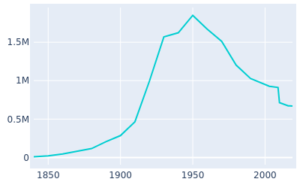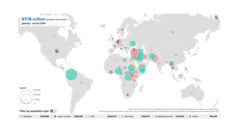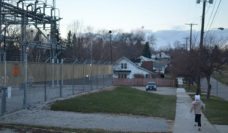When I lived in Ann Arbor, Michigan I had friends who were proud that they made it through grad school or their residency having never once set foot in Detroit. They told me it was too poor, too dangerous, and too sad. They are right that poverty and violent crime rates are high, but Detroit is not a sad place. Anyone not paying attention to Detroit is missing out on one of the most fascinating stories in our country right now.
One of the first times I went into Detroit was to see my beloved Yankees. I grew up in NYC and had worked as a pretzel vendor at Yankee Stadium during parts of the 1999 and 2000 championship seasons. I was excited to introduce my daughter to the legacy of Yankees fandom she had inherited as a birthright. But as we walked into Comerica Park the ticket collector asked my 3-year-old if this was her first Tigers game. When she said yes, she was given a Tigers hat, a poster, and baseball cards. They told her, “You are a Tigers fan for life now!” Turns out they were right. I had complex feelings for a moment, but fell in love with the team as well. We live in Boston now, and though my 9-year-old daughter doesn’t really care about baseball, she still proudly hangs a Tigers banner on her wall.
That experience is a metaphor for my experience in Detroit. The city has inspired and challenged me like no other. I ran my first (and so far only) marathon through the streets of Detroit. I saw intense poverty and entire blocks with deserted houses. Large skyscrapers sit empty like a bomb had been dropped. But there is also a world-class art museum, fantastic restaurants, a burgeoning music scene, and a feeling of hope that progress is happening.
The graph below is key to understanding Detroit. The city boomed in the mid-20th century at the height of the automobile industry. But then each subsequent 30-year period saw the population decline by half a million people such that over 60 years the population had decreased by more than half. In other words, the infrastructure and resources of Detroit were designed for nearly 2 million people but are now inhabited by not much more than half a million. This has affected every aspect of the social determinants of health, including the quality of public schools, sanitation, and safety.

This is a special and unique week for Public Health Post: we are devoting all five articles to understanding a slice of Detroit. We sent PHP Fellow Qing Wai Wong to visit the city this summer with the charge of coming back with some stories about public health in Detroit. She has written about trauma, what happens to people whose water gets shut off because their landlords don’t pay bills, and STD clinics, as well as interviews former Detroit Health Commissioner and current gubernatorial candidate Abdul El-Sayed. I am very grateful to her for all her hard work and proud of what she has produced. Enjoy!
Feature image courtesy of the author.













